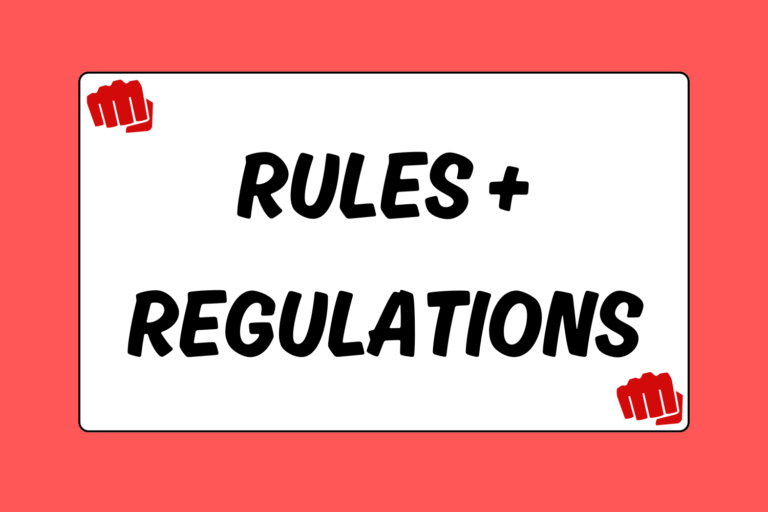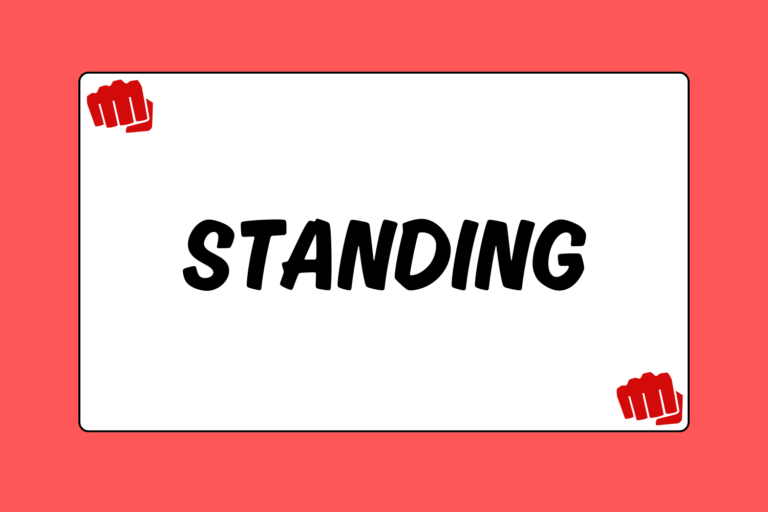The Path Begins with Pankration
The first organized competition most similar to what we know today as modern mixed martial arts (MMA) was pankration. Translated into English as “all powers,” this sport allowed fighters to use virtually any part of their bodies, along with any technique or maneuver, to defeat an opponent. Needless to say, these competitions were often very dangerous for the fighters, and pankration matches commonly resulted in the death of one or both competitors. These matches were loosely regulated. They had no time limit, no weight classes, and very few rules.
Pankration was the first organized combat sport to combine striking and grappling. In order to win a bout, a fighter must have done one of three things. He must have made his opponent submit, either to a specific hold or out of fear of being harmed or killed. He must have choked his opponent unconscious. Or, he must have killed him.
Fighting techniques were much more rudimentary than what we see used in mixed martial arts fights today. Various forms of striking with the hands, knees, legs, and head were used by fighters when standing and when on the ground. Also, forms of wrestling and grappling were utilized to control and submit opponents. Although most of these techniques were unrefined in comparison to what is seen in mixed martial arts today, takedowns, throws, joint locks, chokes, and other maneuvers were commonly used by fighters.
Pankration was introduced into the ancient Olympic Games in 648 BC because of its popularity among the Greeks. Fighters were thought to be heroes and were highly regarded by the Greek people. It is believed that many Greek myths stemmed from pankration fighters. Techniques used in pankration were also utilized to train soldiers for battle. When the modern Olympic Games were established in 1896 AD, pankration was not included in its list of events. This is most likely because of the sport’s violent history and lack of formal and “civilized” rules, which blatantly disregarded the safety of the fighters.
The Origin of Jiu-Jitsu
It is very difficult to determine the exact origin of the Japanese martial art known as jiu-jitsu (sometimes spelled, “jujutsu”). What is clear, though, is that jiu-jitsu was created to teach Samurai warriors fighting skills that would allow them to defeat less-mobile, armored enemies when weapons could not be utilized. Early jiu-jitsu came in several forms and styles, most of which consisted of throwing and grappling techniques. Little to no emphasis was placed on offensive striking, similar to mainstream martial arts, such as karate and kung fu.
When Japan’s period of civil war ended around the 16th century, jiu-jitsu was modified to be practiced and taught as a form of self-defense. During this time, several other arts were also being created, all utilizing various principles of jiu-jitsu. Through time, Japanese Jiu-Jitsu would become the inspiration for aikido, hapkido, kenpo, judo, sambo, and eventually Brazilian Jiu-Jitsu.
Gracie Jiu-Jitsu
In 1914, a man named Esai Maeda immigrated to Brazil to live in one of the several Japanese colonies that were being established. This man was no ordinary citizen, however. Maeda was an expert in the art of judo (then called “Kano Jiu-Jitsu”), and he had studied directly under the pioneer of the art, Kano Jigoro. Judo is a martial art that is deeply rooted in traditional jiu-jitsu and shares many similarities with its “mother art,” such as its throwing techniques and submissions.
In Brazil, Maeda met a local businessman, Gastão Gracie. The bond between Maeda and Gracie was strong and shortly after they met, Maeda agreed to teach the art of judo to Gastão’s oldest son, Carlos Gracie. Maeda continued to teach the young Carlos Gracie for the latter part of his teen years. When Maeda returned to Japan, Carlos continued to practice all the he had learned. He then taught what he had learned to his brothers, including Helio, who would become the most influential figure in the development of Brazilian Jiu-Jitsu.
Helio Gracie, the youngest and frail-framed son of Gastão, was the least likely son of all the Gracies to excel in any type of martial art or sporting event. However, it would be Helio’s physique that would be the driving force in the development of the techniques and philosophies of Brazilian Jiu-Jitsu. Because of several health problems, Helio could not use strength or speed against opponents. Instead, he started to develop techniques that involved superior positioning, leverage, and timing. With the help of his brothers, Helio had developed a set of techniques that could be used by a person of any size. These techniques would become the fundamentals of what we know today as Brazilian Jiu-Jitsu. They would dramatically change the techniques and philosophies used when fighting on the ground in mixed martial arts, especially the offensive use of the guard position.
The Rise of Vale-Tudo
Around the same time Gracie Jiu-Jitsu was being developed, an exciting, “underground” sport was growing in popularity in Brazil: Vale-tudo. Much like pankration, vale-tudo allowed fighters to use any means necessary to defeat an opponent. These events were made popular as sideshow attractions at circuses; however, most events took place in martial arts dojos or gyms. Vale-tudo was the first sport to attract top fighters from all disciplines: Wrestling, boxing, karate, kung fu, and eventually, Brazilian Jiu-Jitsu.
As the Gracie brothers refined their jiu-jitsu, they quickly understood how practical their techniques were for fighting and self-defense situations. Wanting to prove this, Helio Gracie issued an open challenge to fight any person, of any fighting style or size, in a vale-tudo match.
Helio, and several of his brothers, started by defeating local opponents using jiu-jitsu. Once word spread of their technical dominance, challengers from across the world traveled to Brazil to prove themselves against the newly-developed martial art. One by one, wrestlers, boxers, capoeira fighters, and more were all defeated by a Gracie.
Vale-tudo competitions became more popular all over the world, and fights were being held in Europe, Asia, and other places where formalized, “anything goes” fighting had not been present. The next generation of Gracie’s continued to dominate these competitions, just as Helio and his brothers had done. It quickly became clear that Brazilian Jiu-Jitsu was crucial to learn to become a competent fighter. Because of this, the Gracie’s made their way to the United States to teach their family’s art. This move was the first step in building the most influential organization in mixed martial arts history.
Ultimate Fighting Championship Established
After word spread of the Gracie family’s dominance using Brazilian Jiu-Jitsu in the late 1980s and early 1990s, an American businessman, Art Davie, put together an event to finally settle the question that was on the minds of every sports fan, “What is the most dominant fighting style?” With the help of Rorion Gracie, Davie put together a one-night, eight-man tournament that would host one representative of eight different major fighting styles.
This event was first titled “War of the Worlds,” but would later be called “UFC 1,” the first Ultimate Fighting Championship. Nearly one million fans tuned in for this event on November 12, 1993, to witness the slight-bodied jiu-jitsu practitioner, Royce Gracie, dominate all of his opponents en route to winning the very first Ultimate Fighting Championship Tournament. What was to be a “one-time only” tournament turned into a regular event that would advance one of the most popular sports of the late 20th and early 21st centuries.
Evolution of MMA
The most difficult thing to grasp about mixed martial arts is that the sport is still in its infancy. UFC 1 was the first major mixed martial arts event in history and since then, the sport has changed dramatically. Countless promotions designed to showcase MMA have sprung up across the world, and fight fans are now able to watch the sport live in virtually any country — each with several different variations in rules and competition procedures.
At its inception, mixed martial arts rules were somewhat barbaric and did not have the fighters’ safety in mind. For this reason, mixed martial arts was banned in many countries in the late 20th century. However, over the last few years, athletic commissions have stepped up to regulate mixed martial arts, refining the rules to make competitions safer for fighters, but still exciting for fight fans. Because of this, mixed martial arts has grown to become a mainstream sport. It is now regularly shown on cable television and live events sellout in record numbers.
The techniques and strategies involved in the sport have evolved immensely. What was once a sport that involved one-dimensional fighters with backgrounds in only one type of fighting style, has progressed into a sport where the most successful fighters are well-versed in both striking and grappling. Because of the rise in its popularity over the last two decades, mixed martial arts is being taught to children and adults as a separate, “holistic” martial art, including elements of wrestling, jiu-jitsu, boxing, Muaythai, and other fighting styles in its techniques. Because of the adoption of several fighting style elements, it comes as no surprise that mixed martial arts is being revolutionized on a daily basis.
There’s no telling where mixed martial arts will go from this point forward. A growing fan base ensures that promotions will continue to host the most exciting fights possible, and events will become more available to fight fans everywhere. The continued improvement of its rules and regulations of competition may mean that amateur mixed martial arts will grow, possibly allowing it to be contested as a collegiate or Olympic sport, much like pankration was during the ancient games. Whatever happens in mixed martial arts, one thing is absolutely clear: MMA is here to stay!





